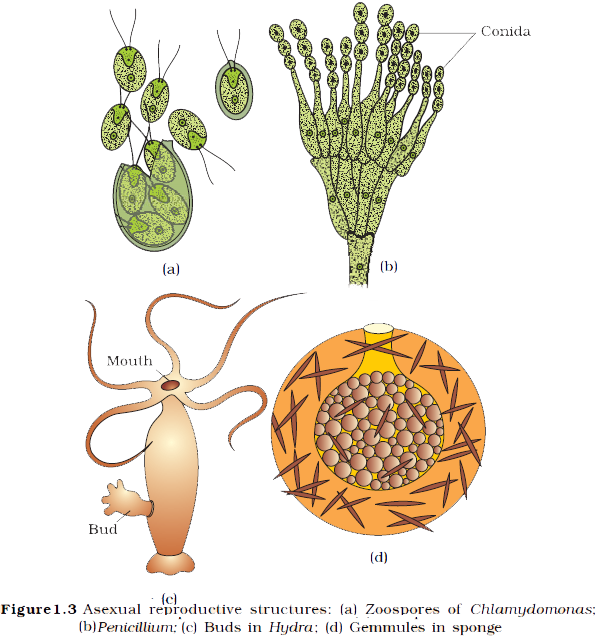
- •Reproduction of organisms. Types and characteristics of sexual and unsexual reproduction of organisms.
- •Introduction
- •1. Reproduction
- •1.1 Asexual reproduction
- •1.2 Sexual Reproduction
- •1.2.1.1 Gametogenesis
- •1.2.1.2 Gamete Transfer
- •1.2.2 Fertilisation
- •1.2.3 Post-fertilisation Events
- •1.2.3.1 The Zygote
- •1.2.3.2 Embryogenesis
MINISTRY OF EDUCATION AND SCIENCE OF UKRAINE NATIONAL AVIATION UNIVERSITY INSTITUTE OF ECOLOGICAL SAFETY DEPARTMENT OF BIOTECHNOLOGY
Home work
Reproduction of organisms. Types and characteristics of sexual and unsexual reproduction of organisms.
Student: Naumchuk Natalia Group IES 204 Leader: Vasylchenko O.A
Kyiv 2013
Plan
Introduction
1. Reproduction
1.1 Asexual reproduction
1.2 Sexual Reproduction
1.2.1 Pre-fertilization Events
1.2.1.1 Gametogenesis
1.2.1.2 Gamete Transfer
1.2.2 Fertilisation
1.2.3 Post-fertilisation Events
1.2.3.1 The Zygote
1.2.3.2 Embryogenesis
Summary
Introduction
Each and every organism can live only for a certain period of time. The period from birth to the natural death of an organism represents its life span. Isn’t it both interesting and intriguing to note that it may be as short as a few days or as long as a few thousand years? Between these two extremes are the life spans of most other living organisms. You may note that life spans of organisms are not necessarily correlated with their sizes; the sizes of crows and parrots are not very different yet their life spans show a wide difference. Similarly, a mango tree has a much shorter life span as compared to a papaya tree. Whatever be the life span, death of every individual organism is a certainty, i.e., no individual is immortal, except single-celled organisms. There must be some processes in living organisms that ensure this continuity. We are talking about reproduction, something that we take for granted.
1. Reproduction
Reproduction is defined as a biological process in which an organism gives rise to young ones (offspring) similar to itself. The offspring grow, mature and in turn produce new offspring. Thus, there is a cycle of birth, growth and death. Reproduction enables the continuity of the species, generation after generation.
There is a large diversity in the biological world and each organism has evolved its own mechanism to multiply and produce offspring. The organism’s habitat, its internal physiology and several other factors are collectively responsible for how it reproduces. Based on whether there is participation of one organism or two in the process of reproduction, it is of two types. When offspring is produced by a single parent with or without the involvement of gamete formation, the reproduction is asexual. When two parents (opposite sex) participate in the reproductive process and also involve fusion of male and female gametes, it is called sexual reproduction.
1.1 Asexual reproduction
In this method, a single individual (parent) is capable of producing offspring. As a result, the offspring that are roduced are not only identical to one another but are also exact copies of their parent. Are these offspring likely to be genetically identical or different? The term clone is used to describe such morphologically and genetically similar individuals.



Asexual reproduction is common among single-celled organisms, and in plants and animals with relatively simple organizations. In Protists and Monerans, the organism or the parent cell divides into two to give rise to new individuals (Figure1.2). Thus, in these organisms cell division is itself a mode of reproduction. Many single-celled organisms reproduce by binary fission, where a cell divides into two halves and each rapidly grows into an adult (e.g., Amoeba, Paramecium). In yeast, the division is unequal and small buds are produced that remain attached initially to the parent cell which, eventually gets separated and mature into new yeast organisms (cells).
Members of the Kingdom Fungi and simple plants such as algae reproduce through special asexual reproductive structures (Figure 1.3). The most common of these structures are zoospores that usually are microscopic motile structures. Other common asexual reproductive structures are conidia (Penicillium), buds (Hydra) and gemmules (sponge).

While in animals and other simple organisms the term asexual is used unambiguously, in plants, the term vegetative reproduction is frequently used. In plants, the units of vegetative propagation such as runner, rhizome, sucker, tuber, offset, and bulb are all capable of giving rise to new offspring (Figure1.4). These structures are called vegetative propagates. Obviously, since the formation of these structures does not involve two parents, the process involved is asexual.

It is interesting to note that asexual reproduction is the common method of reproduction in organisms that have a relatively simple organization, like algae and fungi and that they shift to sexual method of reproduction just before the onset of adverse conditions. Find out how sexual reproduction enables these organisms to survive during unfavorable conditions? Why is sexual reproduction favored under such conditions? Asexual (vegetative) as well as sexual modes of reproduction are exhibited by the higher plants. On the other hand, only sexual mode of reproduction is present in most of the animals.
